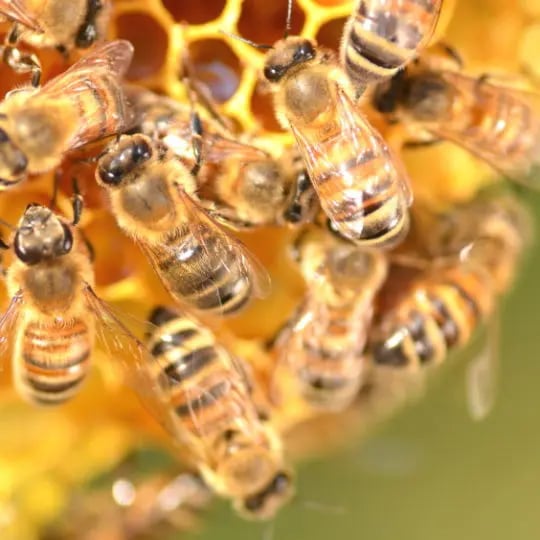Bees: When to Remove Them, and When to Leave Them Alone

Bees can be a serious pest problem, especially for those that are allergic or have kids that play near their nests. There are absolutely times when you may need to remove a bee’s nest from your property.
But you also don’t want to remove a bee’s nest without first considering whether it’s right for the environment. Bees play a crucial role in the world – more than almost any other type of insect or animal. Yet their numbers are dwindling dramatically, and this is causing global health concerns. There are times when keeping the nest, despite the sting risk, is the best solution.
Bees: Factors to Consider Before Removing Bee’s Nests
Keep in mind that honey bees, and most bees, will not sting without a very good reason. With the exception of an immediate danger to their nest, bees are very gentle and strongly prefer not to sting. That is why the following factors need to be considered before you remove a nest:
- Danger – If no one in your family is allergic to bees, it may not be worth removing. Yes, the pain from a sting can be painful, but unless there is a danger to the nest the most you are at risk for is a single sting. You may also want to consider removing a nest when you have small children that may not be able to avoid the nest, but if a sting is only going to be painful and not otherwise dangerous, the nest may be worth saving.
- Distance – The further a nest is from your home, the less it poses a danger to you. The further bees are from their nest the less likely they are to sting, and the further a nest is the less likely you will accidentally be a threat. Consider the location before you remove it.
- Grass and Flowers – Similarly, see how likely it is that you’re going to run into a bee somewhere other than the nest. For example, if you have a lot of flowers and plants that bees like on your lawn, then you may be at risk for accidentally stepping on a bee or threatening one. That could be a problem. But if all of your flowers are far away from your lawn and the bees are only staying in a few distant flower beds and plants, then the likelihood of trapping a bee becomes very small.
- Bee – Finally, make sure you’re talking about bees in the first place. Some wasps look like bees and may have nests that should be removed. While honey bees and bumble bees are notoriously unaggressive, and can be safer to have around your property.
Some bee hives absolutely should be removed, while some may not require it and may be better for the environment if they stay. Call Green Pest Solutions today to find out more about our bee removal and integrative pest management solutions.